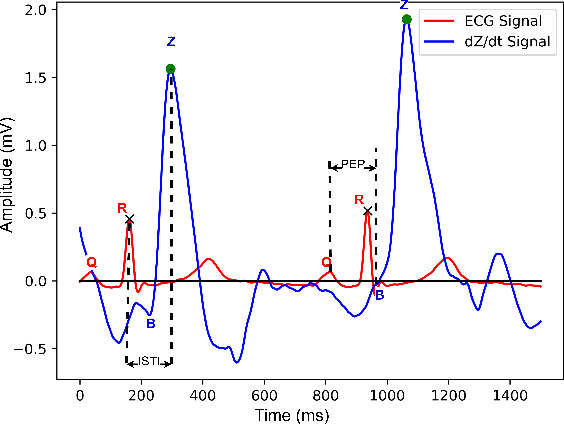Barry Giesbrecht
Mazed and Confused: A Dataset of Cybersickness, Working Memory, Mental Load, Physical Load, and Attention During a Real Walking Task in VR
Sep 10, 2024Abstract:Virtual Reality (VR) is quickly establishing itself in various industries, including training, education, medicine, and entertainment, in which users are frequently required to carry out multiple complex cognitive and physical activities. However, the relationship between cognitive activities, physical activities, and familiar feelings of cybersickness is not well understood and thus can be unpredictable for developers. Researchers have previously provided labeled datasets for predicting cybersickness while users are stationary, but there have been few labeled datasets on cybersickness while users are physically walking. Thus, from 39 participants, we collected head orientation, head position, eye tracking, images, physiological readings from external sensors, and the self-reported cybersickness severity, physical load, and mental load in VR. Throughout the data collection, participants navigated mazes via real walking and performed tasks challenging their attention and working memory. To demonstrate the dataset's utility, we conducted a case study of training classifiers in which we achieved 95% accuracy for cybersickness severity classification. The noteworthy performance of the straightforward classifiers makes this dataset ideal for future researchers to develop cybersickness detection and reduction models. To better understand the features that helped with classification, we performed SHAP(SHapley Additive exPlanations) analysis, highlighting the importance of eye tracking and physiological measures for cybersickness prediction while walking. This open dataset can allow future researchers to study the connection between cybersickness and cognitive loads and develop prediction models. This dataset will empower future VR developers to design efficient and effective Virtual Environments by improving cognitive load management and minimizing cybersickness.
StressNet: Detecting Stress in Thermal Videos
Nov 23, 2020



Abstract:Precise measurement of physiological signals is critical for the effective monitoring of human vital signs. Recent developments in computer vision have demonstrated that signals such as pulse rate and respiration rate can be extracted from digital video of humans, increasing the possibility of contact-less monitoring. This paper presents a novel approach to obtaining physiological signals and classifying stress states from thermal video. The proposed network--"StressNet"--features a hybrid emission representation model that models the direct emission and absorption of heat by the skin and underlying blood vessels. This results in an information-rich feature representation of the face, which is used by spatio-temporal network for reconstructing the ISTI ( Initial Systolic Time Interval: a measure of change in cardiac sympathetic activity that is considered to be a quantitative index of stress in humans ). The reconstructed ISTI signal is fed into a stress-detection model to detect and classify the individual's stress state ( i.e. stress or no stress ). A detailed evaluation demonstrates that StressNet achieves estimated the ISTI signal with 95% accuracy and detect stress with average precision of 0.842. The source code is available on Github.
 Add to Chrome
Add to Chrome Add to Firefox
Add to Firefox Add to Edge
Add to Edge